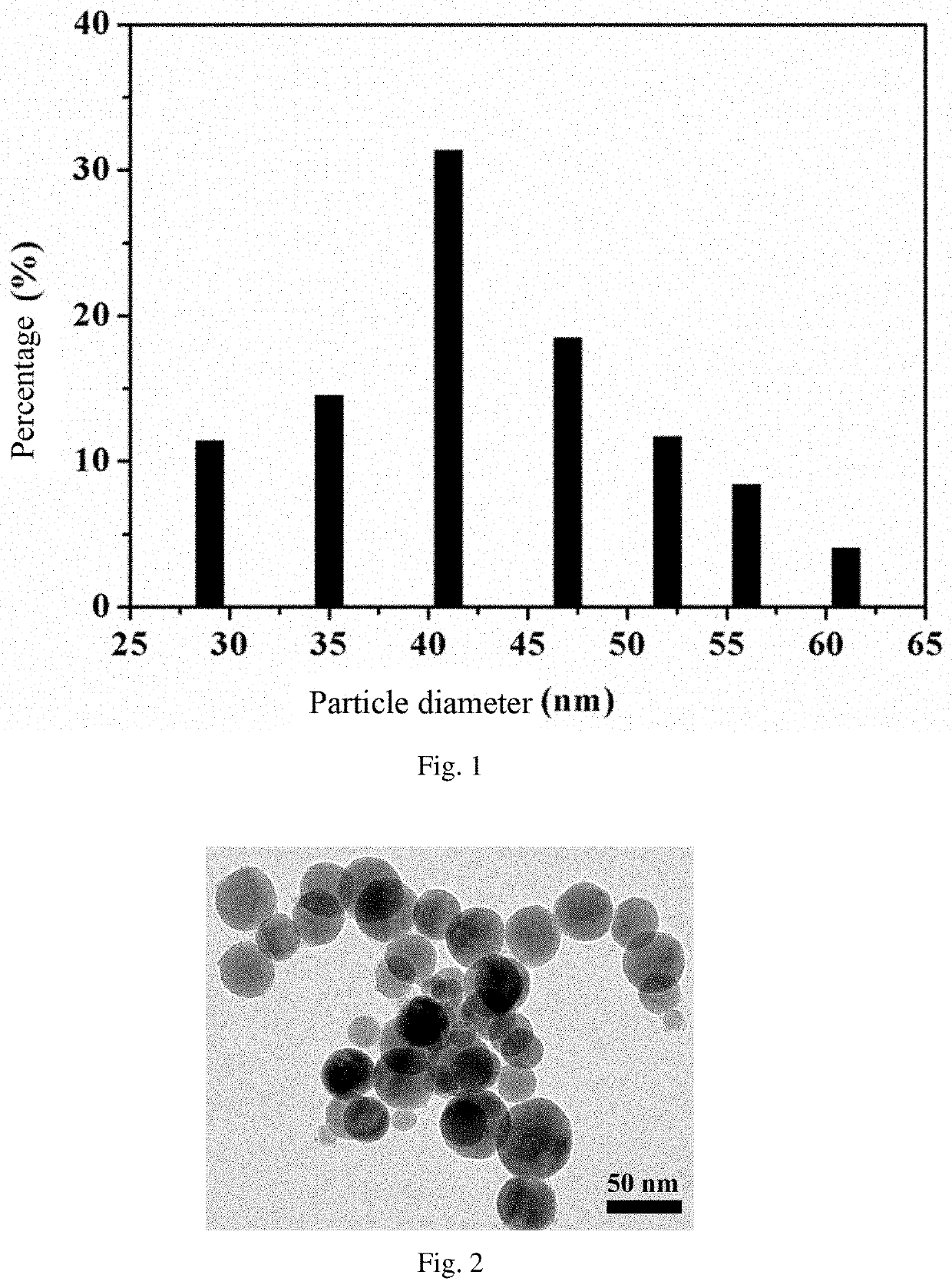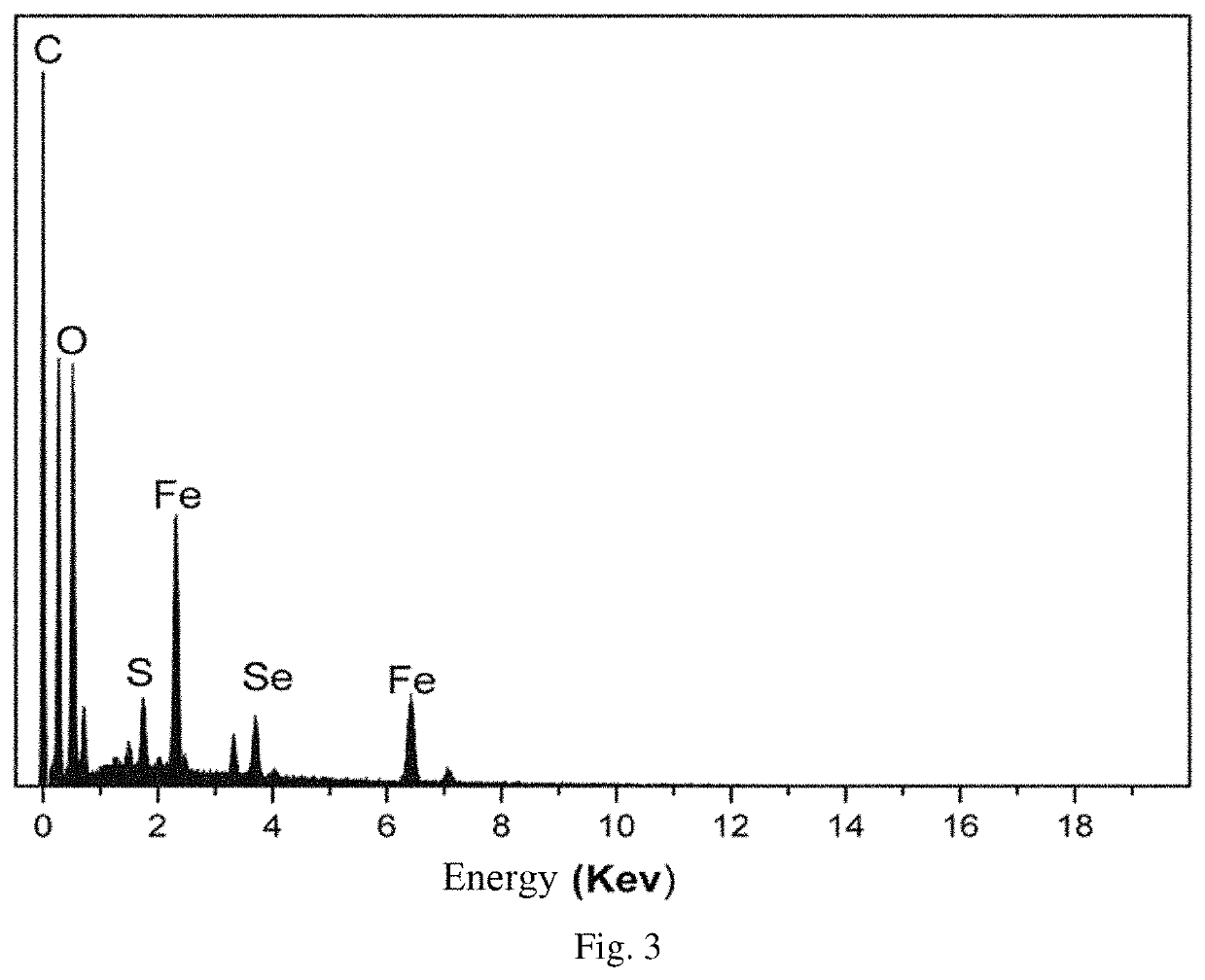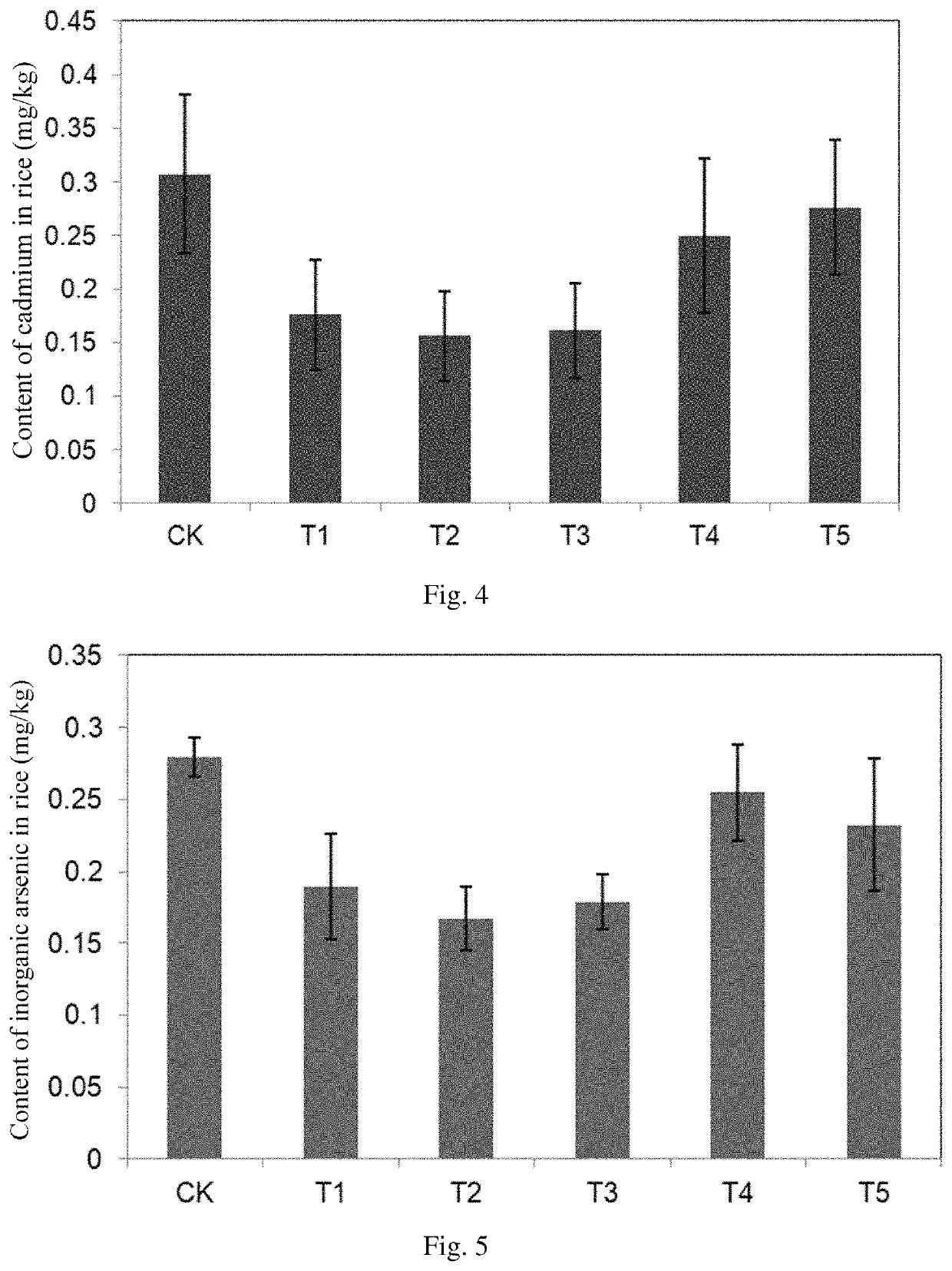Ferrous modified selenium sol for inhibiting accumulation of cadmium and arsenic in rice and preparation method and application thereof
a technology of selenium selenium and cadmium, which is applied in the field of remediation technology for heavy metal pollution in soil, can solve the problems of difficult control of cadmium and arsenic pollution in rice fields, difficult to solve the problem of cadmium and arsenic pollution in regional rice fields, and achieves the effects of high dispersion, simple preparation process, and large industrial production scal
- Summary
- Abstract
- Description
- Claims
- Application Information
AI Technical Summary
Benefits of technology
Problems solved by technology
Method used
Image
Examples
example 1
on of Ferrous Modified Selenium Sol I
[0057](1) Preparation of mixed solution containing iron and selenium: weighing 14.5 g of ferric chloride (containing 5 g of the iron element) and 1 g of sodium selenite (containing 0.5 g of the selenium element), adding 84.5 mL of deionized water thereto, stirring well, and fully dissolving to obtain a mixed solution containing iron and selenium;
[0058](2) controlling the temperature of the above mixed solution at 35° C. in a water bath, slowly adding 47 g of ascorbic acid (at a molar ratio of 3:1 to the iron ion in the mixed solution) to the mixed solution while stirring, and continuing stirring for 5 min after the addition; when pink precipitation was no longer produced, slowly adding 24.6 g of potassium carbonate (at a molar ratio of 2:1 to the iron ion in the mixed solution) while stirring, and continuing stirring for 5 min after the addition until no more precipitation was produced; filtering the precipitation and washing 5 times with deioniz...
example 2
on of Ferrous Modified Selenium Sol II
[0062](1) Preparation of mixed solution containing iron and selenium: weighing 11.34 g of ferric chloride (containing 5 g of the iron element), 21.61 g of ferric nitrate (containing 5 g of the iron element), 21.88 g of ferric citrate (containing 5 g of the iron element), 2.25 g of selenic acid (containing 1.25 g of the selenium element), and 2.04 g of seleninic acid (containing 1.25 g of the selenium element), adding 141 mL of deionized water thereto, stirring well, and fully dissolving to obtain a mixed solution containing iron and selenium;
[0063](2) controlling the temperature of the above mixed solution at 85° C. in a water bath, slowly adding 66 g of ascorbic acid (at a molar ratio of 1.4:1 to the iron ion in the mixed solution) and 10.28 g of reduced glutathione (at a molar ratio of 0.1:1 to the iron ion in the mixed solution) to the mixed solution while stirring, and continuing stirring for 15 min after the addition; when pink precipitatio...
example 3
on of Ferrous Modified Selenium Sol III
[0067](1) Preparation of mixed solution containing iron and selenium: weighing 27.1 g of ferrous sulfate (containing 10 g of the iron element) and 10 g of sodium selenite (containing 5 g of the selenium element), adding 63 mL of deionized water thereto, stirring well, and fully dissolving to obtain a mixed solution containing iron and selenium;
[0068](2) controlling the temperature of the above mixed solution at 50° C. in a water bath, slowly adding 62.86 g of ascorbic acid (at a molar ratio of 2:1 to the iron ion in the mixed solution) while stirring, and continuing stirring for 10 min after the addition; when pink precipitation was no longer produced, slowly adding 24.6 g of potassium carbonate and 18.9 g of sodium carbonate (at a molar ratio of 1:1 to the iron ion in the mixed solution) while stirring, and continuing stirring for 10 min after the addition until no more precipitation was produced; filtering the precipitation and washing 4 time...
PUM
| Property | Measurement | Unit |
|---|---|---|
| volume | aaaaa | aaaaa |
| temperature | aaaaa | aaaaa |
| mass | aaaaa | aaaaa |
Abstract
Description
Claims
Application Information
 Login to View More
Login to View More - R&D Engineer
- R&D Manager
- IP Professional
- Industry Leading Data Capabilities
- Powerful AI technology
- Patent DNA Extraction
Browse by: Latest US Patents, China's latest patents, Technical Efficacy Thesaurus, Application Domain, Technology Topic, Popular Technical Reports.
© 2024 PatSnap. All rights reserved.Legal|Privacy policy|Modern Slavery Act Transparency Statement|Sitemap|About US| Contact US: help@patsnap.com










